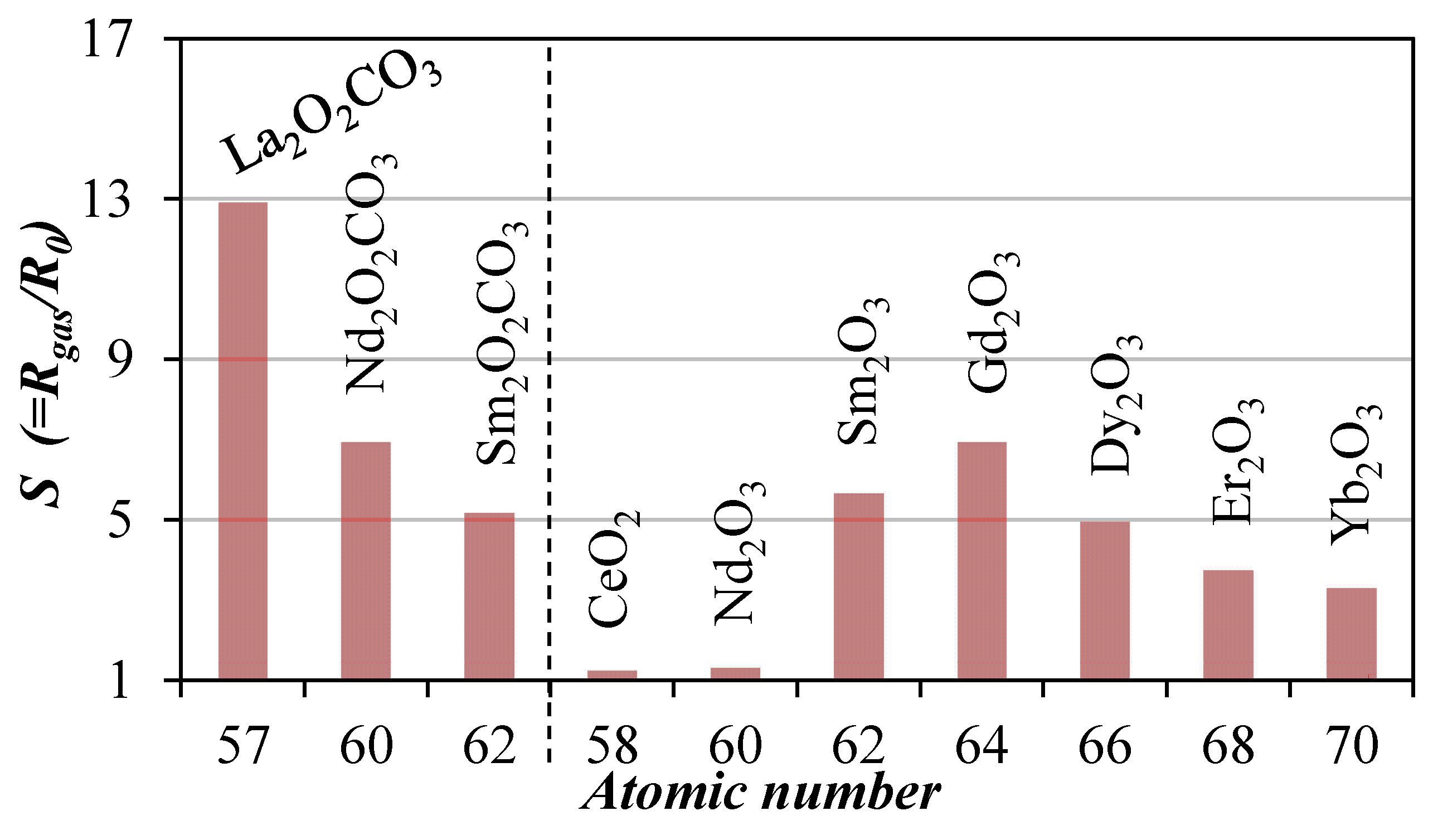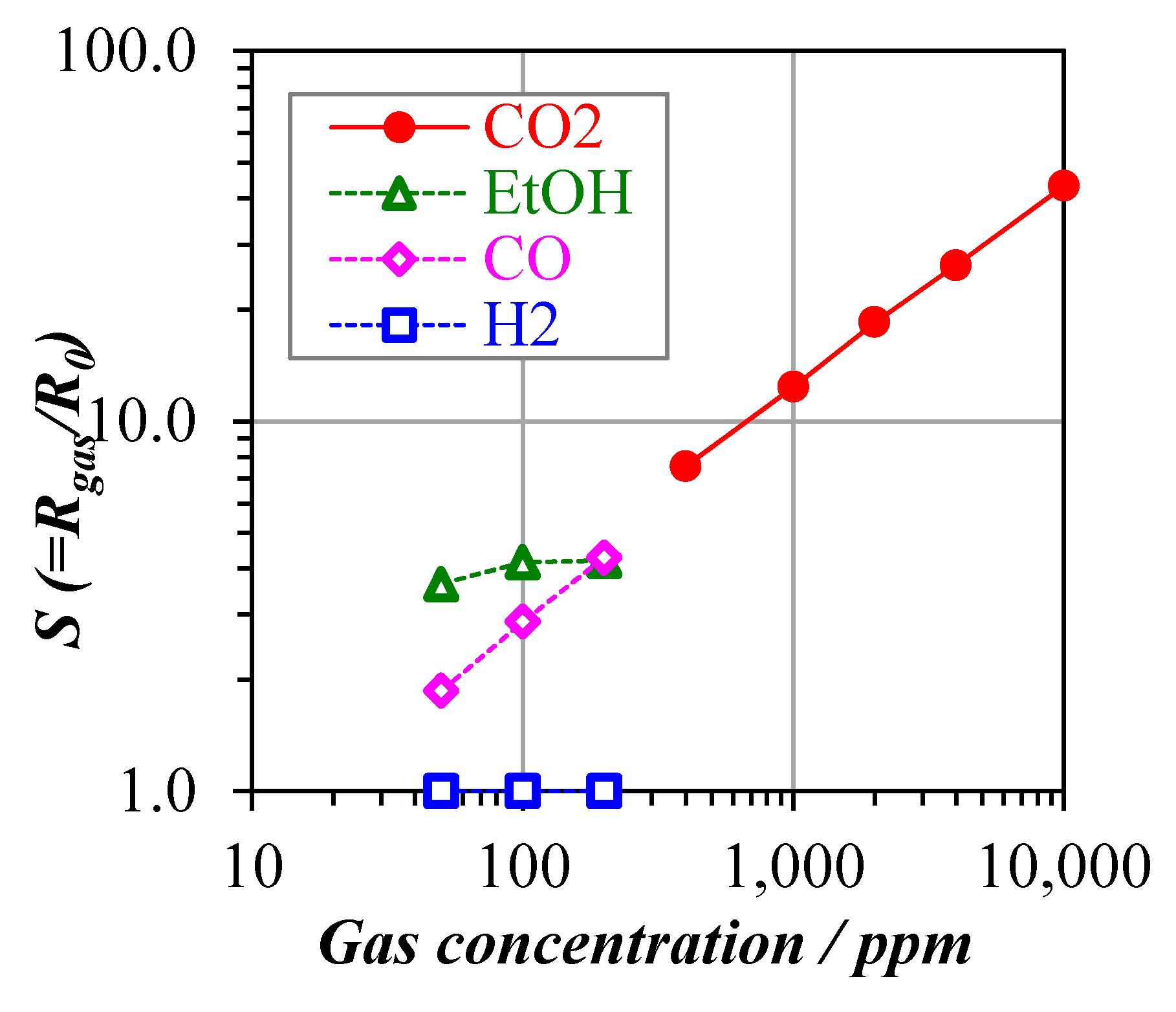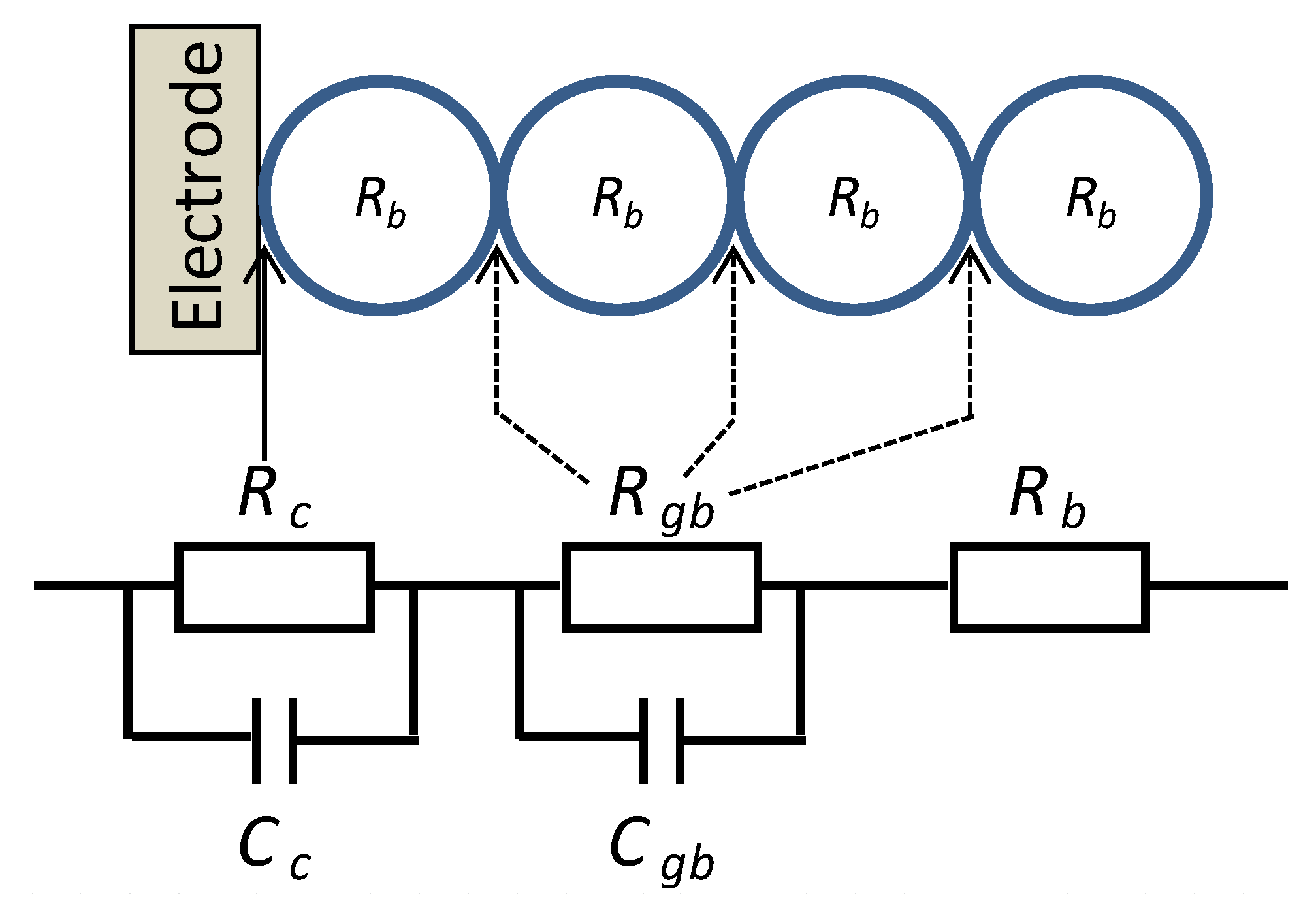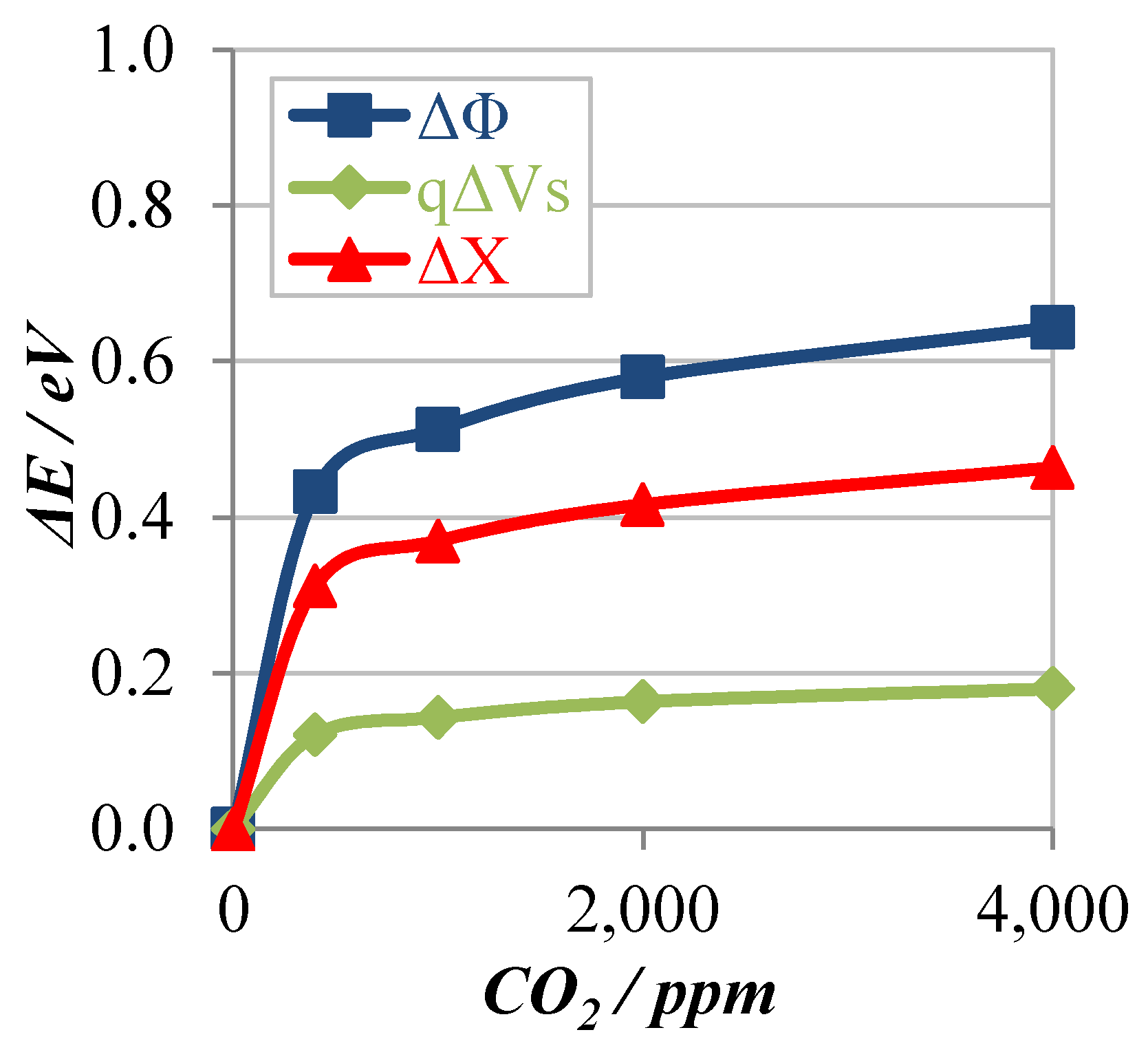Rare-Earth Based Chemoresistive CO2 Sensors and Their Operando Investigations †
Abstract
1. Introduction
2. Material Synthesis and Sensor Fabrication
3. Results and Discussion
3.1. DC Resistance Measurements
3.2. Operando Investigations
References
- Djerdj, I.; Haensch, A.; Koziej, D.; Pokhrel, S.; Barsan, N.; Weimar, U.; Niederberger, M. Neodymium Dioxide Carbonate as a Sensing Layer for Chemoresistive CO2 Sensing. Chem. Mater. 2009, 21, 5375–5381. [Google Scholar] [CrossRef]
- Haensch, A.; Djerj, I.; Niederberger, M.; Barsan, N.; Weimar, U. CO2 sensing with chemoresistive Nd2O2CO3 sensors-Operando insights. Procedia Chem. 2009, 1, 650–653. [Google Scholar] [CrossRef]
- Barsan, N.; Koziej, D.; Weimar, U. Metal oxide-based gas sensor research: How to? Sens. Actuators B Chem. 2007, 121, 18–35. [Google Scholar] [CrossRef]





Publisher’s Note: MDPI stays neutral with regard to jurisdictional claims in published maps and institutional affiliations. |
© 2019 by the authors. Licensee MDPI, Basel, Switzerland. This article is an open access article distributed under the terms and conditions of the Creative Commons Attribution (CC BY) license (https://creativecommons.org/licenses/by/4.0/).
Share and Cite
Suzuki, T.; Sackmann, A.; Oprea, A.; Weimar, U.; Barsan, N. Rare-Earth Based Chemoresistive CO2 Sensors and Their Operando Investigations. Proceedings 2019, 14, 17. https://doi.org/10.3390/proceedings2019014017
Suzuki T, Sackmann A, Oprea A, Weimar U, Barsan N. Rare-Earth Based Chemoresistive CO2 Sensors and Their Operando Investigations. Proceedings. 2019; 14(1):17. https://doi.org/10.3390/proceedings2019014017
Chicago/Turabian StyleSuzuki, Takuya, Andre Sackmann, Alexandru Oprea, Udo Weimar, and Nicolae Barsan. 2019. "Rare-Earth Based Chemoresistive CO2 Sensors and Their Operando Investigations" Proceedings 14, no. 1: 17. https://doi.org/10.3390/proceedings2019014017
APA StyleSuzuki, T., Sackmann, A., Oprea, A., Weimar, U., & Barsan, N. (2019). Rare-Earth Based Chemoresistive CO2 Sensors and Their Operando Investigations. Proceedings, 14(1), 17. https://doi.org/10.3390/proceedings2019014017



